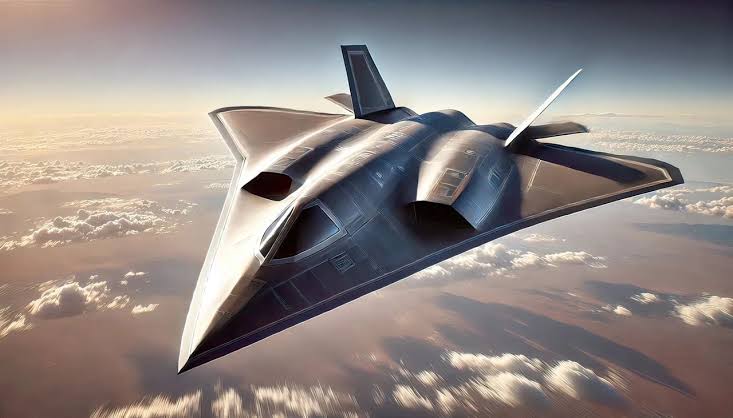China continues to redefine its military aviation capabilities with a series of cutting-edge advancements. Following the unveiling of its 6th generation fighter jets, the People’s Liberation Army Air Force (PLAAF) has now debuted the KJ-3000 Airborne Early Warning and Control (AEW&C) aircraft, marking another leap in its aerial warfare strategy. This article explores the significance of these developments, the capabilities of the KJ-3000, and their implications for global military dynamics.

What you need to know about the 6th Generation Fighter Jets
China’s military aviation achievements reached a new milestone with the maiden flights of two 6th generation fighter jets, developed by Chengdu Aerospace Corporation (CAC) and Shenyang Aircraft Corporation (SAC). The CAC’s prototype was seen flying alongside the fifth-generation J-20S, a twin-seat variant of the Chengdu J-20 Mighty Dragon. Soon after, SAC’s prototype took to the skies, showcasing China’s rapid advancements in next-generation fighter technology.
These jets represent a significant evolution in stealth, artificial intelligence, advanced sensors, and network-centric warfare capabilities. Their development signals China’s intention to compete with the United States and other global powers in the race for air superiority.
The Emergence of the KJ-3000 AEW&C Aircraft 6th Generation fighter Jets
In the same week, China unveiled the KJ-3000 AEW&C aircraft, designed to enhance early warning, surveillance, and battlefield command capabilities. Though China has not officially confirmed the aircraft’s maiden flight, blurry images circulated widely on social media on December 27, sparking excitement among military analysts and enthusiasts.
What Sets the KJ-3000 Apart?
The KJ-3000 is built on the Y-20B transport aircraft platform, leveraging the domestically-produced WS-20 turbofan engines. The WS-20 engines provide approximately 31,000 pounds of thrust, enabling the aircraft to carry a payload of up to 66 tons—16 tons more than its predecessor, the KJ-2000.



Key Features of the 6th Generation fighter Jets
- Rotodome Technology:
The aircraft features a large rotodome, a rotating radome that provides 360-degree radar coverage. This advanced radar system enhances the detection and tracking of aerial targets over vast distances, reportedly ranging from 360 to 500 kilometers. - C4ISR Integration:
The KJ-3000 is equipped with Command, Control, Communications, Computers, Intelligence, Surveillance, and Reconnaissance (C4ISR) technologies. These systems allow seamless coordination across land, sea, and air domains, transforming the aircraft into a flying command center. - Advanced Communication Systems:
A bulge on the tail of the aircraft hints at the integration of cutting-edge communication technologies, which are crucial for networked warfare and real-time information sharing. - Fuel Efficiency and Extended Range:
With more efficient WS-20 engines, the KJ-3000 offers longer flight durations, making it ideal for extended surveillance and combat missions.
Strategic Role and Battlefield Applications
AEW&C aircraft are indispensable in modern warfare due to their ability to:
- Detect low-flying aircraft and missiles that evade traditional ground-based radars.
- Monitor vast airspaces and provide early warnings of hostile activities.
- Facilitate coordinated responses by directing fighter jets, missiles, and other assets during combat.
The KJ-3000’s capabilities are expected to enhance the PLAAF’s operational flexibility, enabling it to maintain air superiority in contested regions like the Taiwan Strait and the South China Sea.
China 6th Generation fighter Jets vs USA
China’s AEW&C fleet already surpasses that of the United States in terms of numbers. The fleet includes:
- KJ-2000: Based on the Il-76 platform, this is the PLAAF’s largest AEW&C aircraft to date.
- KJ-200 and KJ-500: Built on the Y-8 and Y-9 transport aircraft platforms, respectively, these are smaller and optimized for regional operations.
- KJ-600: A carrier-based AEW&C aircraft under development, expected to enhance the PLA Navy’s maritime surveillance and aerial command capabilities.
The KJ-3000 is poised to replace the KJ-2000, offering superior payload capacity, range, and advanced technologies. Together, these aircraft form a robust network of “eyes in the sky,” crucial for monitoring airspace and coordinating military operations.
Broader Implications of China’s Advancements
The simultaneous debut of sixth-generation fighters and the KJ-3000 underscores China’s commitment to challenging Western military dominance. By leveraging indigenous technologies and platforms like the Y-20B, China aims to reduce its reliance on foreign imports while boosting its defense exports.
Geopolitical Considerations:
- Indo-Pacific Tensions:
The enhanced capabilities of China’s AEW&C fleet, coupled with its advanced fighters, are likely to shift the power dynamics in the Indo-Pacific. Nations like India and Japan may need to accelerate their own defense programs to counterbalance China’s growing influence. - Global Market Competition:
China’s advancements also position it as a formidable player in the global defense market, challenging the duopoly of Western aerospace giants. The development of versatile platforms like the KJ-3000 could attract buyers from countries seeking cost-effective alternatives to Western-made AEW&C systems.
What does China unveiling the 6th Generation fighter Jets mean to the world?
China’s unveiling of the KJ-3000 AEW&C aircraft, alongside its sixth-generation fighters, marks a transformative moment in military aviation. These advancements not only enhance the PLAAF’s operational capabilities but also signal China’s ambitions to dominate the global defense landscape. As the world watches, these developments will undoubtedly shape the future of air warfare and geopolitical power dynamics.




